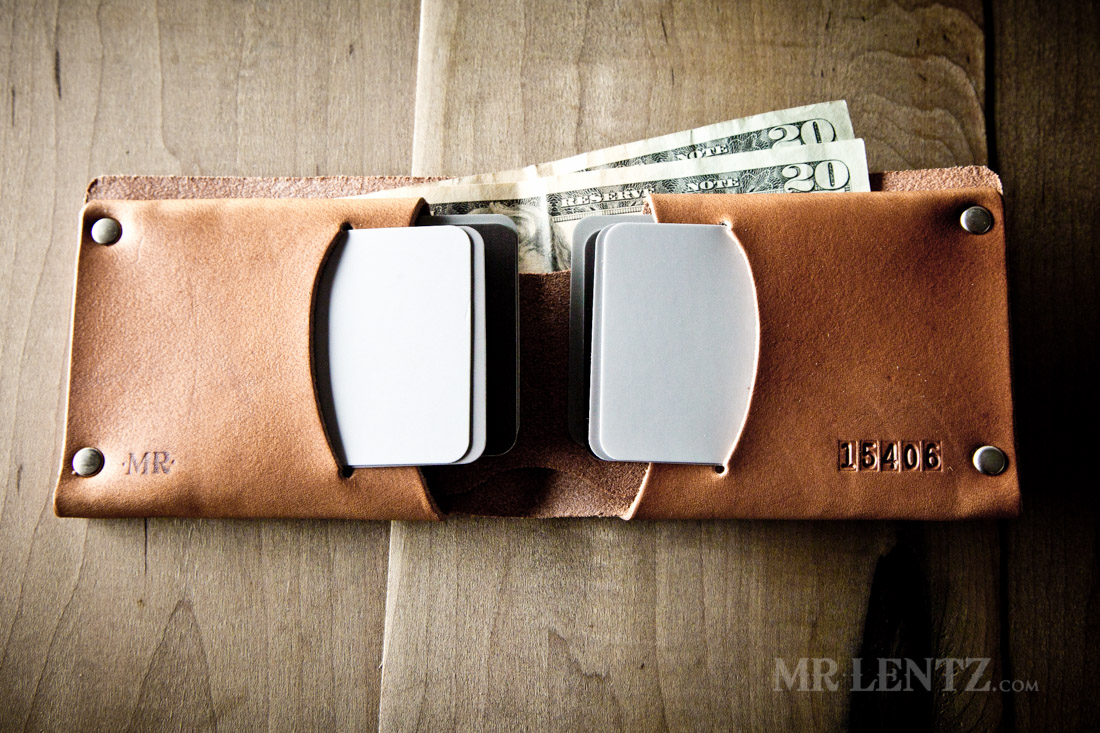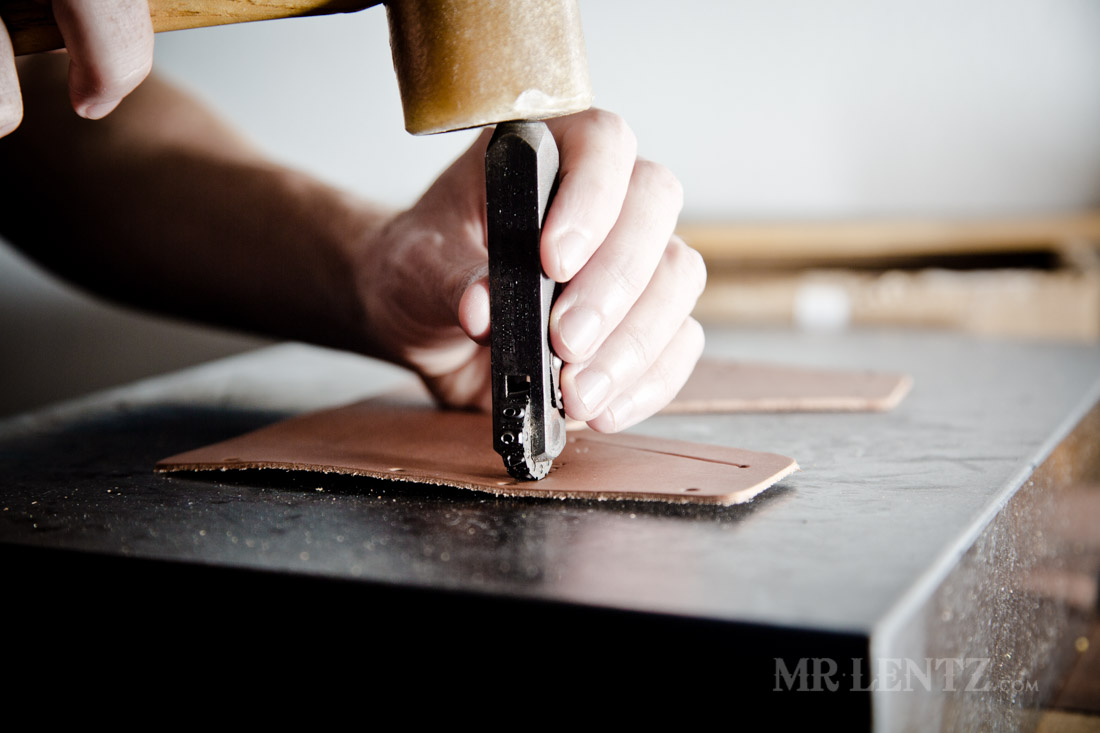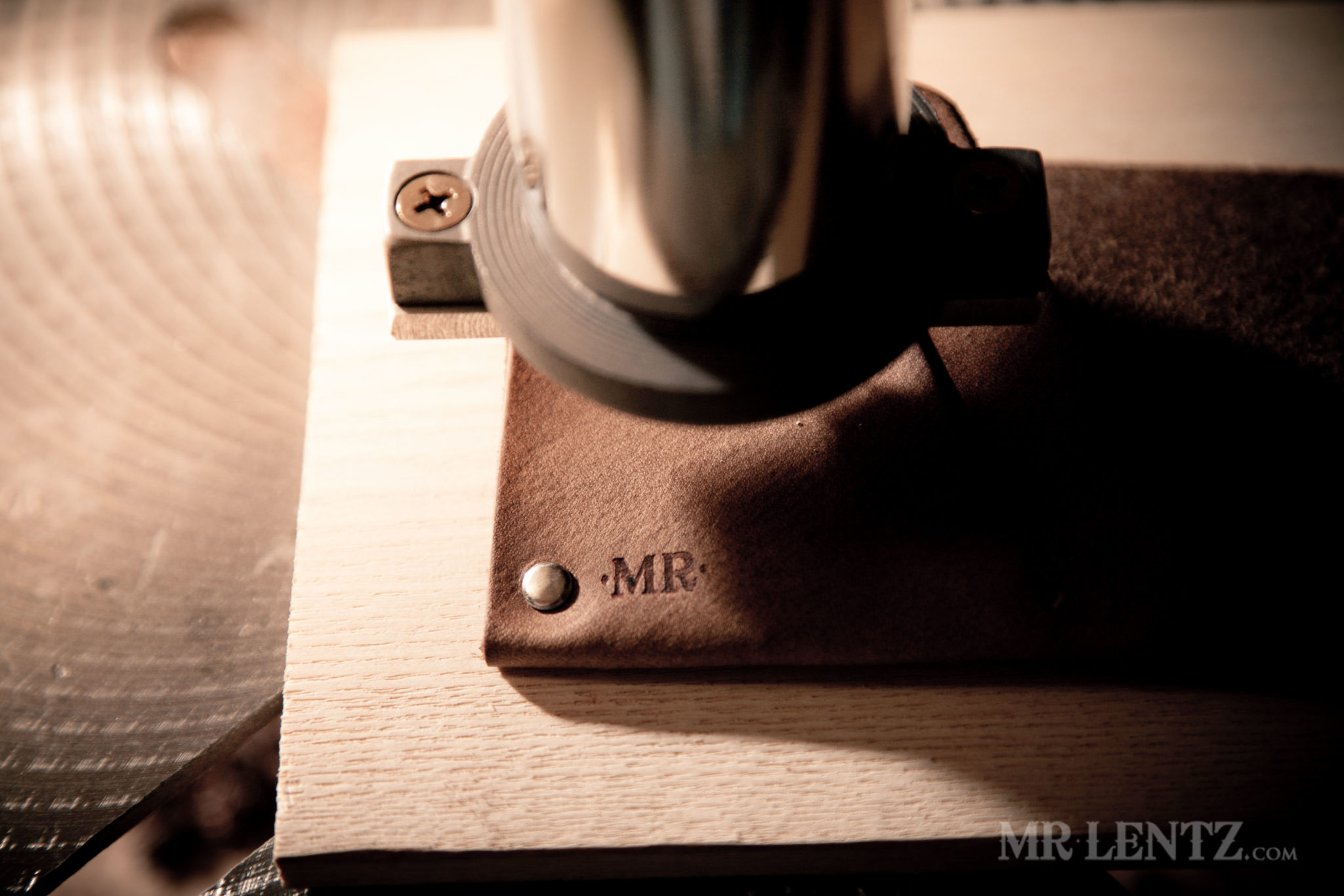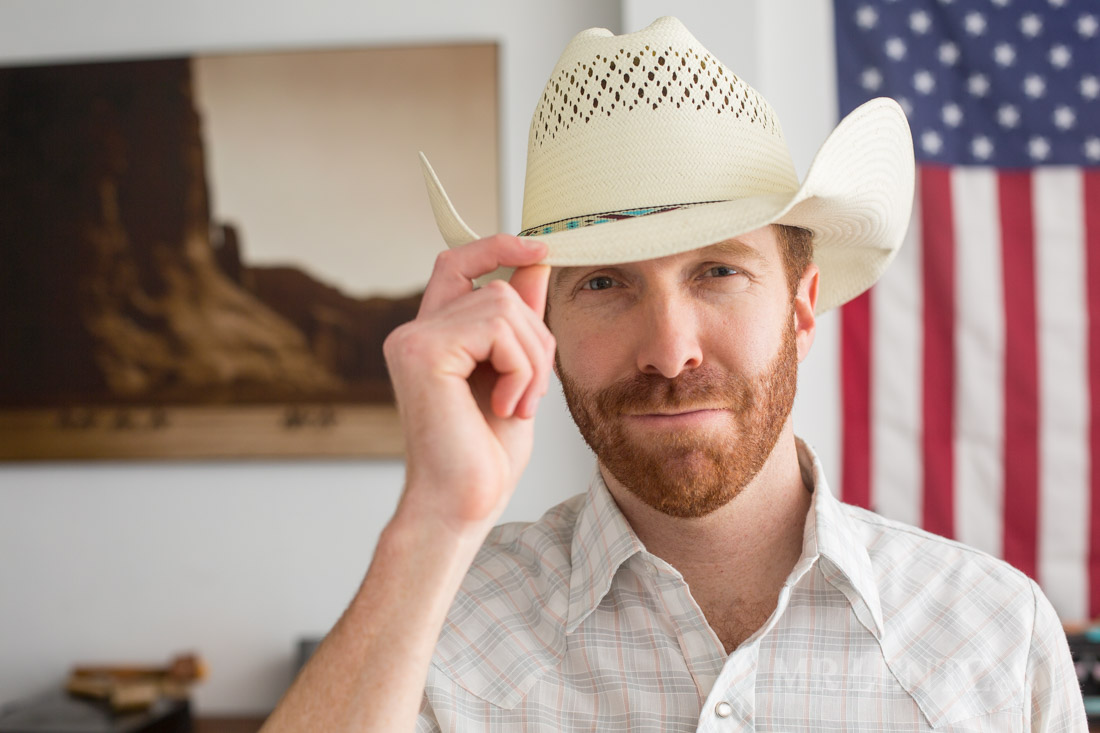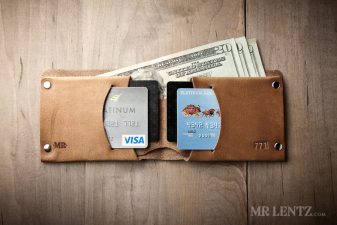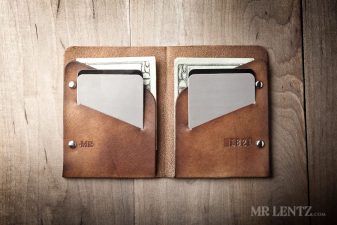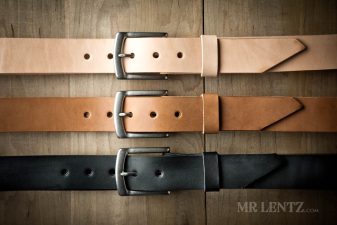Everything, Leather, Philosophy
7 Tips on Finding the Best Leather Wallet
For seven years now I have been working with leather and creating rustic and durable leather wallets. I’ve seen what works, what doesn’t and I’m about to impart some of that information on you my friend! In the world of wallet making you should know that there are a lot of corners manufacturers can cut to save on cost, I’ll point out the most obvious ones for you here.
Type of Leather
If you follow my blog, or have read a lot of my product descriptions you will see that I push the term Full-Grain Vegetable-Tanned leather a lot. I cannot stress how important it is to buy a leather wallet that is made from this style of leather tanning. It is undoubtedly the strongest form of leather a wallet maker can use for at least two reasons.
First, Full-Grain means that the section of leather being used is the outermost layer of the cow’s hide. This is the surface layer and is extremely densely packed with fibers, so much so – that it is practically indestructible. This is the only layer of leather that will still contain original scars from the cow’s lifetime. It’s the layer that helped that cow weather storms and lay on tough ground its whole life. This is the most expensive layer of leather a maker can buy due to its toughness. A lot of manufacturers will go down a grade to ‘Top-Grain’ for two reasons: it is much cheaper, and all of those imperfections and scars have been sandblasted smooth. What the buyer should know, is that ‘Top-Grain’ leather has much looser fibers and will shed, deteriorate and wear through fairly quickly. Here’s another post I wrote on leather types.
Second, Vegetable-Tanned leather is the way in which the hide has been treated and preserved for use in leather goods. Vegetable Tanning is an ancient natural process of soaking hides in pools of water with tree barks. The natural tannins help to preserve the leather without compromising the strength of the leather fibers. That basically means that your leather product may start out slightly firmer, but will break-in very quickly and soften up as the fibers relax and stretch. Vegetable Tanning takes quite a bit longer than other chemically induced processes and as such…costs more. A lot of manufacturers will choose to use a much cheaper tanned leather instead called ‘Chrome Tanned’ or even ‘Genuine Leather’ or ‘Bonded Leather’. It’s as bad as it sounds, harsh chemicals and all! The chemicals in chrome tanning actually help to break down the fibers in the hide allowing the leather a softer supple feel from the beginning. While customers love that feeling of soft leather, what they don’t realize is that since the fibers were broken down unnaturally…the product will not last that long and tend to wear through much more quickly – as well it’s fairly bad for the environment! Plus – chrome tanned leather will not patina nicely and age with use. Genuine Leather or Bonded Leather, is basically just finely ground up scraps of leather pressed into large industrial sheets using glue. Again, it’s cheap and it’ll fall apart!
Style of Construction
The vast majority of wallets out there are stitched together. I will admit, I do like the look of a nice stitch job. There are two things to note about that though: how was it stitched, and well…stitching always wears out at some point. Most stitch wallets are manufactured using leather sewing machines and this can be a big hidden problem for the customer. Sewing machines use what is called a ‘Lock Stitch’ and without getting too technical I will just say this: if one thread breaks on a lock stitched wallet…the entire wallet will unravel quickly. Hand stitching is much better than a machine but you still have to consider the tragic flaw of thread being used on a leather item that gets heavily abused. Have you ever had a wallet where the thread broke? So have I and pretty much everyone else I have ever encountered. That’s why I started designing riveted wallets. By the time that rivet wears through… you’d probably be 450 years old! Seriously though, a wallet is the most worn and beaten up leather item a person will own. It needs to be built with materials that wont wear out. So, you decide – would you like metal or thread to hold it together?
Like this post so far?
I spend most of my free time creating tutorials like this to help those like yourself get into leatherwork and woodworking, or get better at it. If you'd like to support my efforts, consider checking out my handmade leather goods shop and purchasing a gift for yourself or a loved one. It's readers like you that help keep a small U.S. business like mine going strong, so -thank you!
Quality of Materials
We already touched on the types of leather, but how about where that leather came from? And how about any hardware used with it like rivets, snaps, grommets, chains, clips? Where the leather comes from plays in as a huge factor as far as quality goes. There are thousands of tanning companies across the globe…and most of them are not doing such a great job. The local cows could be malnourished and produce poor hides, local regulation might be too loose for environmentally sound tanning, the cuts of leather and coatings on it will vary drastically from batch to batch…it’s a giant crapshoot. I personally only source from one U.S. tannery that’s been in the business for more than a century now. It costs quite a bit more but they make very well tanned hides from U.S. cattle.
The hardware used on wallets is very important too. Leather does not respond well to rusting items and as such you should only choose wallets made with solid brass or stainless steel hardware. Solid brass currently is a bit pricey, but well worth it in the longrun. Many other manufacturers will cut corners there and use cheap metal alloys. It might look nice for the first few months….
Location of Construction
In general I like to always push people to support their local makers from their own country. I mean why not? The money stays in the local economy and benefits everyone. There’s another reason though and I will admit that I am a bit biased here – for most countries in the world it is hard to get their hands on American materials and hardware, which are known to cost more and be of a higher standard in general. Also – who is making that wallet anyways? In today’s world it’s easy to pass off a wallet as being made from a local maker in another country…but if you dig into their site, blog, social media…is that really the case? Large manufacturers are using marketing techniques to pass off mass produced items as being handmade by small shops, surprise surprise!
Maker Warranty
Does the maker behind the wallet you want offer a good warranty for fixing it down the road? Lots of things can happen to that wallet, and sometimes there’s a defective piece of leather or hardware – will they replace or repair it? You want to find a maker that stands behind their work and is in it for the longrun. All warranties are not created equal though – keep in mind how big or small the shop is. Some makers that are very small and treat wallet making as a hobby can give great personalized customer service in cases like this…but will they still be around 5 to 10 years from now if you need some repair work done?
Small Shops vs. Big Box Stores
Kind of a continuation of the last section, you will need to keep in mind how little or big the shop is that you are buying from. The pertains to the warranty, but also to the customer service you are likely to receive. Very large stores typically have great 30 day + return policies, but after that you are on your own. They also tend to only sell mass produced items that have many corners cut to save on cost. Buyer beware! Then you have the very little guys just making as a hobby. Again – great customer service, probably good warranties, but will they be around to help you out in the next 5 to 10 years? A small to medium sized maker will be more established to follow through on their warranty and typically they still have the time to offer great customer service.
How Minimal Can You Go
It comes down to what do you really need to carry? Over the years I have pared down the items in my wallet to only the cards I actually use, a small stack of cash and a few random receipts that tend to float around for months at a time. For me – I found that carrying too much was very uncomfortable. I used to put my old wallet in my back pocket and sit on it with lots of cards, ID cards, cash, etc.. I think chiropractors love meeting patients like that. When you slim the contents of your wallet down, you can also use a simpler wallet…and you can put that wallet in your front pocket without the bulge. Most of my wallets are designed to do this quite easily. I reduced the number of ‘pockets’ and put in card slots to help save on thickness. In the end everyone is different, but make sure to make that decision of which style you need after you have pared down your own items.
Summary
In the end there are a million manufacturers of wallets, most of them cutting corners to provide a dirt cheap piece of leather that will ultimately wear out and break on you after a year or two. Usually cheap ain’t the best option, and in the longrun it usually isn’t cheap since you tend to have to re-purchase more often. Make sure to choose a wallet from a maker who knows how to find good quality Full-Grain Vegetable-Tanned leather, solid brass hardware and a construction technique that will last through the beating a wallet takes. Find a maker who stands behind their work with a warranty for repair and make sure to find one that will be in it for the longrun. Lastly, pare down what you actually need to carry, and then you can use a better designed wallet that will be much slimmer and easier to carry.
If you need a starting point, you can take a look at my online shop here, and please feel free to ask questions in the comment section below, or email me!


